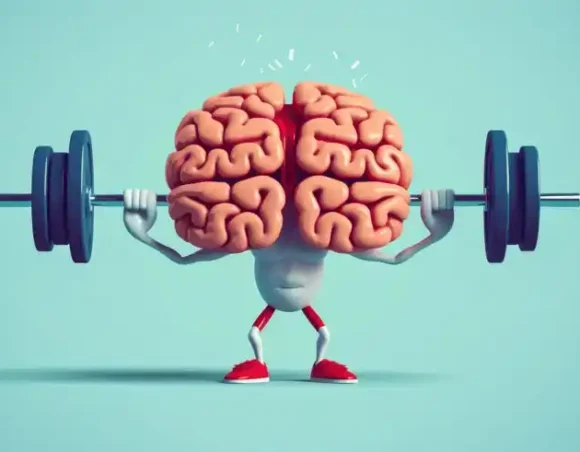The High Schooler’s Guide to Smarter Learning with Neuroplasticity

What if you could rewire your brain to learn faster, retain information better, and even reshape how you think about challenges? It turns out, you can—thanks to neuroplasticity.
Neuroplasticity is the brain’s ability to re-organize itself by forming new neural connections throughout life. Unlike the outdated belief that intelligence is fixed, research in neuroscience shows that your brain is constantly evolving based on what you do, think, and experience. This means that with the right strategies, you can actively train your brain to become a better learner.
As a high school student, understanding how neuroplasticity works can give you an edge in academics, problem-solving, and even emotional resilience. Let’s break it down.
How Neuroplasticity Shapes Your Thinking and Learning
Your brain is made up of billions of neurons that communicate through synapses—connections that get stronger or weaker depending on how often they are used. Think of it like building muscle at the gym: the more you use a certain brain pathway, the stronger it becomes.
- When you practice algebra repeatedly, the neural pathways for solving equations strengthen.
- When you learn a new language, your brain creates connections between vocabulary, grammar, and meaning.
- When you develop a new habit—whether it’s waking up early or practicing mindfulness—you’re literally rewiring your brain.
This ability to reshape neural pathways is why persistence and effort play a more significant role in academic success than raw talent. Intelligence isn’t just something you’re born with—it’s something you build.
The Adolescent Brain: A Period of Rapid Growth
During adolescence, your brain undergoes significant structural changes, making high school years a crucial time for cognitive development. Some key changes include:
Synaptic Pruning: Your brain eliminates weaker neural connections while strengthening frequently used ones. This is why effective study habits matter—they reinforce the pathways you want to keep.
Prefrontal Cortex Development: This part of the brain, responsible for critical thinking and decision-making, continues developing until your mid-20s.
Increased Myelination: The brain’s processing speed improves as neurons are insulated with myelin, allowing for faster learning and problem-solving.
Because of these changes, high school students have a unique opportunity to shape their cognitive abilities. The way you study, the skills you practice, and even your mindset can significantly impact how your brain develops.
How to Use Neuroplasticity to Improve Your Learning
The good news? Since your brain is adaptable, you can optimize your learning process using neuroscience-backed strategies.
1. Spaced Repetition: Strengthening Long-Term Memory
One of the biggest mistakes students make is cramming before exams. While it might help short-term recall, it does little for long-term retention.
Instead, try spaced repetition, a technique where you review information at gradually increasing intervals (e.g., one day, three days, one week). This forces your brain to recall and reinforce the material, making it stick. Use apps like Anki or Quizlet for spaced repetition flashcards.
2. Active Learning: Engage, Don’t Just Memorize
Passive learning (e.g., rereading notes) is far less effective than active learning, which involves deeper cognitive engagement.
Upgrade Your Study Habits:
- Instead of just reading a textbook, explain the concept to someone else (the Feynman Technique).
- Use dual coding—combine visuals (diagrams, mind maps) with text.
- Ask yourself why and how something works, rather than just memorizing facts.
3. The Growth Mindset: Rewiring Your Beliefs About Intelligence
If you’ve ever thought, “I’m just not a maths person,” stop right there. That’s a fixed mindset—the belief that intelligence is static. Neuroplasticity tells us the opposite: your abilities are not fixed; they can be developed through effort and persistence.
- Instead of saying, “I can’t do this,” say, “I haven’t mastered this yet.”
- Instead of avoiding challenges, embrace them—they activate brain growth.
- See mistakes as learning opportunities, not failures.
This mindset shift is essential for academic success and long-term resilience.
4. Managing Stress: The Brain’s Performance Killer
High school can be stressful, but chronic stress releases cortisol, which negatively impacts memory, focus, and decision-making. Fortunately, you can counteract this by developing habits that promote brain health:
Exercise regularly: Physical activity boosts brain function and helps memory retention.
Practice mindfulness: Meditation and deep breathing can reduce stress and enhance focus.
Prioritize sleep: Your brain consolidates memories while you sleep, so aim for 7-9 hours per night.
Neuroscientists have found that sleep deprivation disrupts neuroplasticity, making learning and emotional regulation more difficult. So, those late-night cram sessions? They might be doing more harm than good.
5. Personalizing Your Learning with Online Education
One of the most powerful ways to take advantage of neuroplasticity is through personalized learning. Schools that offer flexible, student-driven education—such as Canadian Grad Academy—allow students to learn at their own pace, reinforcing neural connections in a way that traditional classroom settings often can’t.
- Self-Paced Learning: Adapt to your brain’s unique learning speed.
- Interactive Content: Engage multiple senses (videos, simulations, discussions) for deeper retention.
- Real-World Application: Apply knowledge in a way that strengthens problem-solving pathways.
This approach ensures that learning is efficient, effective, and aligned with your brain’s natural adaptability.
Your Brain, Your Potential
Neuroplasticity proves that you are not defined by your current abilities. Whether you want to improve in maths, become a better writer, or master a new skill, your brain is built to adapt.
By understanding how learning works on a neurological level, you can transform the way you study, build mental resilience, and unlock new levels of academic and personal success.
The takeaway? You’re not just learning—you’re literally shaping your brain for the future.
About Canadian Grad Academy
Canadian Grad Academy offers students worldwide the chance to earn a recognized high school diploma through a flexible online learning experience. Accredited by the Ontario Ministry of Education, our program maintains equal tuition rates for all students, no matter their location. We focus on personalized education, adapting to individual learning needs with the support of WIAT-III assessments. For more details about our programs, contact us or call us at +1(647)483-7940 or email [email protected].